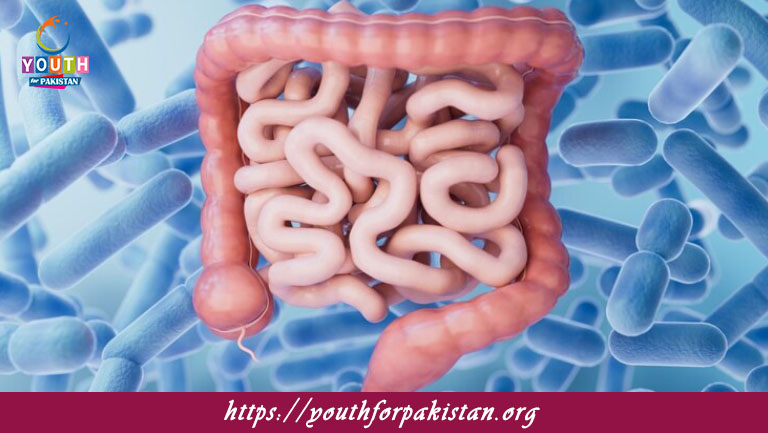Welcome to the Smooth Muscles MDCAT MCQs with Answers. In this post, we have shared Smooth Muscles Multiple Choice Questions and Answers for PMC MDCAT 2024. Each question in MDCAT Biology offers a chance to enhance your knowledge regarding Smooth Muscles MCQs in this MDCAT Online Test.
Smooth muscle is found in: a) Heart
b) Limbs
c) Blood vessels
d) Biceps
Smooth muscle contraction is controlled by: a) The somatic nervous system
b) The autonomic nervous system
c) Voluntary control
d) Skeletal muscle reflexes
Which of the following is true about smooth muscle fibers? a) They are striated
b) They are multinucleated
c) They are non-striated
d) They are voluntary
Smooth muscle cells are: a) Branched
b) Striated
c) Fusiform
d) Multinucleated
Smooth muscle is primarily found in: a) Skeletal muscles
b) Cardiac muscles
c) Internal organs
d) Tendons
The primary function of smooth muscle is to: a) Facilitate voluntary movement
b) Pump blood
c) Control involuntary movements
d) Provide structural support
Smooth muscle contraction is: a) Rapid and forceful
b) Slow and sustained
c) Voluntary and quick
d) Not under nervous system control
Which protein is NOT present in smooth muscle? a) Actin
b) Myosin
c) Troponin
d) Tropomyosin
Smooth muscle fibers are: a) Long and cylindrical
b) Short and branched
c) Spindle-shaped
d) Multi-nucleated
Which of the following best describes the contraction mechanism of smooth muscle? a) Sliding filament mechanism with troponin
b) Sliding filament mechanism with calmodulin
c) Cross-bridge cycling with troponin
d) Cross-bridge cycling with myosin only
Smooth muscle lacks: a) Actin
b) Myosin
c) Striations
d) Nuclei
The neurotransmitter commonly involved in smooth muscle contraction is: a) Acetylcholine
b) Dopamine
c) Serotonin
d) Norepinephrine
Smooth muscle is found in which of the following? a) Biceps
b) Heart
c) Stomach
d) Tongue
Which feature is characteristic of smooth muscle? a) Multiple nuclei per cell
b) Presence of intercalated discs
c) Non-striated fibers
d) High endurance
Smooth muscle contraction is regulated by: a) Hormones
b) Skeletal nervous impulses
c) Cardiac impulses
d) Voluntary actions
The primary role of smooth muscle in the digestive tract is to: a) Maintain posture
b) Facilitate movement of food
c) Pump blood
d) Control body temperature
Smooth muscle fibers have: a) A central nucleus
b) Multiple nuclei
c) Striations
d) Long, cylindrical shapes
Which of the following best describes smooth muscle contraction compared to skeletal muscle? a) Smooth muscle contraction is slower and sustained
b) Smooth muscle contraction is faster and more forceful
c) Skeletal muscle has a higher endurance
d) Skeletal muscle is involuntary
Smooth muscle contraction involves the interaction of: a) Actin and myosin only
b) Actin, myosin, and troponin
c) Actin, myosin, and calmodulin
d) Myosin and tropomyosin
The autonomic nervous system regulates: a) Skeletal muscle
b) Cardiac muscle
c) Smooth muscle
d) All of the above
Smooth muscle contraction is slower than: a) Cardiac muscle contraction
b) Skeletal muscle contraction
c) All types of muscle contraction
d) None of the above
The type of muscle found in the walls of arteries and veins is: a) Skeletal muscle
b) Cardiac muscle
c) Smooth muscle
d) Epithelial muscle
Which of the following statements is correct regarding smooth muscle? a) It is striated and voluntary
b) It is non-striated and involuntary
c) It has intercalated discs
d) It has multiple nuclei per cell
The structure that helps smooth muscle cells to communicate with each other is: a) Intercalated discs
b) Gap junctions
c) Myofibrils
d) Z-lines
Smooth muscle can be found in which organ system? a) Digestive
b) Musculoskeletal
c) Nervous
d) Integumentary
Smooth muscle contractions are triggered by: a) Voluntary movements
b) Direct stimulation of nerves
c) Stretching of the muscle
d) Hormonal signals
The primary difference between smooth and skeletal muscle is: a) Smooth muscle is voluntary and striated
b) Smooth muscle is non-striated and involuntary
c) Skeletal muscle has intercalated discs
d) Skeletal muscle is involuntary
Smooth muscle can be found in the: a) Heart
b) Biceps
c) Walls of intestines
d) Tendons
Smooth muscle cells are: a) Short and branched
b) Long and cylindrical
c) Spindle-shaped
d) Multinucleated
The contraction of smooth muscle is: a) Fast and powerful
b) Slow and rhythmic
c) Voluntary and rapid
d) Involuntary and quick
Smooth muscle lacks which of the following structures? a) Actin
b) Myosin
c) Troponin
d) Calmodulin
Which of the following best describes the appearance of smooth muscle? a) Striated and multinucleated
b) Non-striated and spindle-shaped
c) Striated and branched
d) Smooth and cylindrical
The contraction of smooth muscle is slower due to: a) Lack of calcium
b) Presence of tropomyosin
c) Lack of troponin
d) Absence of striations
Smooth muscle contraction can be influenced by: a) Hormones
b) Nerve impulses
c) Stretch
d) All of the above
Smooth muscle is involved in: a) Voluntary movements
b) Heartbeats
c) Blood vessel constriction
d) Arm movements
Which of the following is not a feature of smooth muscle? a) Spindle-shaped cells
b) Non-striated fibers
c) Multinucleated cells
d) Involuntary control
The contraction of smooth muscle is mediated by: a) Calcium binding to troponin
b) Calmodulin and myosin light chain kinase
c) Cross-bridge cycling with troponin
d) Direct stimulation by the somatic nervous system
Smooth muscle cells communicate via: a) Synaptic clefts
b) Intercalated discs
c) Gap junctions
d) Desmosomes
Smooth muscle contraction can be influenced by which of the following? a) Hormones
b) Stretch
c) Nerve impulses
d) All of the above
Smooth muscle cells have: a) Multiple nuclei
b) Striations
c) A single, central nucleus
d) Intercalated discs
The absence of striations in smooth muscle is due to: a) Lack of myosin
b) Non-organized actin and myosin filaments
c) Absence of actin
d) Absence of troponin
If you are interested to enhance your knowledge regarding Physics, Chemistry, Computer, and Biology please click on the link of each category, you will be redirected to dedicated website for each category.









